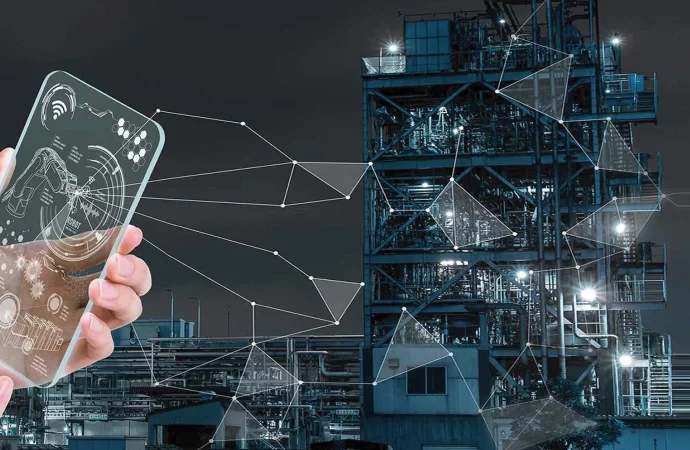Introduction: As a tech enthusiast and researcher, I’ve closely monitored the evolution of edge computing and its transformative impact on the internet. This article explores how edge computing is reshaping the digital landscape by improving data processing, reducing latency, and enabling real-time applications across various sectors. 1. Understanding Edge Computing Define edge computing and explain
Introduction:
As a tech enthusiast and researcher, I’ve closely monitored the evolution of edge computing and its transformative impact on the internet. This article explores how edge computing is reshaping the digital landscape by improving data processing, reducing latency, and enabling real-time applications across various sectors.
1. Understanding Edge Computing
Define edge computing and explain its fundamental principles. Discuss how it differs from traditional cloud computing by processing data closer to the source, thereby reducing the need for centralized data centers and enhancing performance.
2. Reducing Latency for Real-Time Applications
Examine how edge computing reduces latency, a critical factor for real-time applications. Discuss the benefits for industries like gaming, autonomous vehicles, and healthcare, where milliseconds can make a significant difference in user experience and safety.
3. Enhancing IoT and Smart Devices

Image by : Yandex
Explore the role of edge computing in enhancing the functionality of IoT and smart devices. Discuss how it enables efficient data processing and decision-making at the device level, leading to smarter cities, homes, and industrial applications.
4. Improving Data Security and Privacy
Discuss the impact of edge computing on data security and privacy. Highlight how processing data locally reduces the risk of data breaches during transmission and allows for more robust data privacy measures, crucial for industries handling sensitive information.
5. Revolutionizing Healthcare
Analyze the transformative effects of edge computing in the healthcare sector. Discuss applications such as remote patient monitoring, telemedicine, and AI-driven diagnostics, where edge computing enables faster, more reliable data processing and real-time decision-making.
6. Enhancing Autonomous Systems
Examine the benefits of edge computing for autonomous systems, including self-driving cars and drones. Discuss how edge computing supports real-time data analysis and decision-making, enhancing the safety and efficiency of these systems.
7. Transforming Manufacturing with Industry 4.0
Explore how edge computing is integral to Industry 4.0 and smart manufacturing. Discuss how it facilitates predictive maintenance, real-time monitoring, and automation, leading to increased productivity and reduced downtime in manufacturing processes.
8. Supporting Advanced Networking and 5G
Discuss the synergy between edge computing and advanced networking technologies like 5G. Highlight how edge computing complements 5G by providing the low-latency, high-bandwidth infrastructure needed for next-generation applications.
9. Overcoming Challenges in Edge Computing
Address the challenges associated with edge computing, such as infrastructure costs, data management complexities, and the need for robust cybersecurity measures. Discuss potential solutions and the importance of collaboration between technology providers and users.
10. Future Directions: The Evolving Edge Landscape

Image by : Yandex
Conclude with a forward-looking perspective on the future of edge computing. Discuss potential advancements, emerging trends, and the long-term impact on various industries, emphasizing the need for continuous innovation and adaptation.
Informative Table: Key Applications of Edge Computing
| Application | Description | Examples |
| Real-Time Gaming | Reducing latency for seamless gaming experiences | Google Stadia, NVIDIA GeForce Now |
| Autonomous Vehicles | Enhancing decision-making and safety | Tesla Autopilot, Waymo |
| Healthcare | Enabling real-time monitoring and diagnostics | Wearable health devices, AI diagnostics |
| Smart Cities | Improving urban infrastructure and services | Traffic management systems, smart lighting |
| Manufacturing | Facilitating automation and predictive maintenance | Smart factories, robotics |
Comparative Table: Benefits vs. Challenges of Edge Computing
| Benefit | Challenge | Impact |
| Reduced Latency | Infrastructure costs | Improved user experience and real-time processing |
| Enhanced Security | Data management complexities | Increased data privacy and security |
| Improved Efficiency | Need for robust cybersecurity measures | Streamlined operations and reduced bandwidth usage |
| Localized Processing | Integration with existing systems | Enhanced performance and faster decision-making |
Conclusion: Pioneering the Future of the Internet with Edge Computing
Edge computing is revolutionizing the internet by enabling faster, more efficient, and secure data processing. By reducing latency, enhancing IoT functionalities, and supporting real-time applications, edge computing is transforming various industries and paving the way for innovative solutions.
As technology continues to evolve, the integration of edge computing with advanced networking and AI will unlock new possibilities, driving progress and shaping the future of the digital landscape. Embracing these advancements and addressing associated challenges will be crucial for realizing the full potential of edge computing and its applications.




















